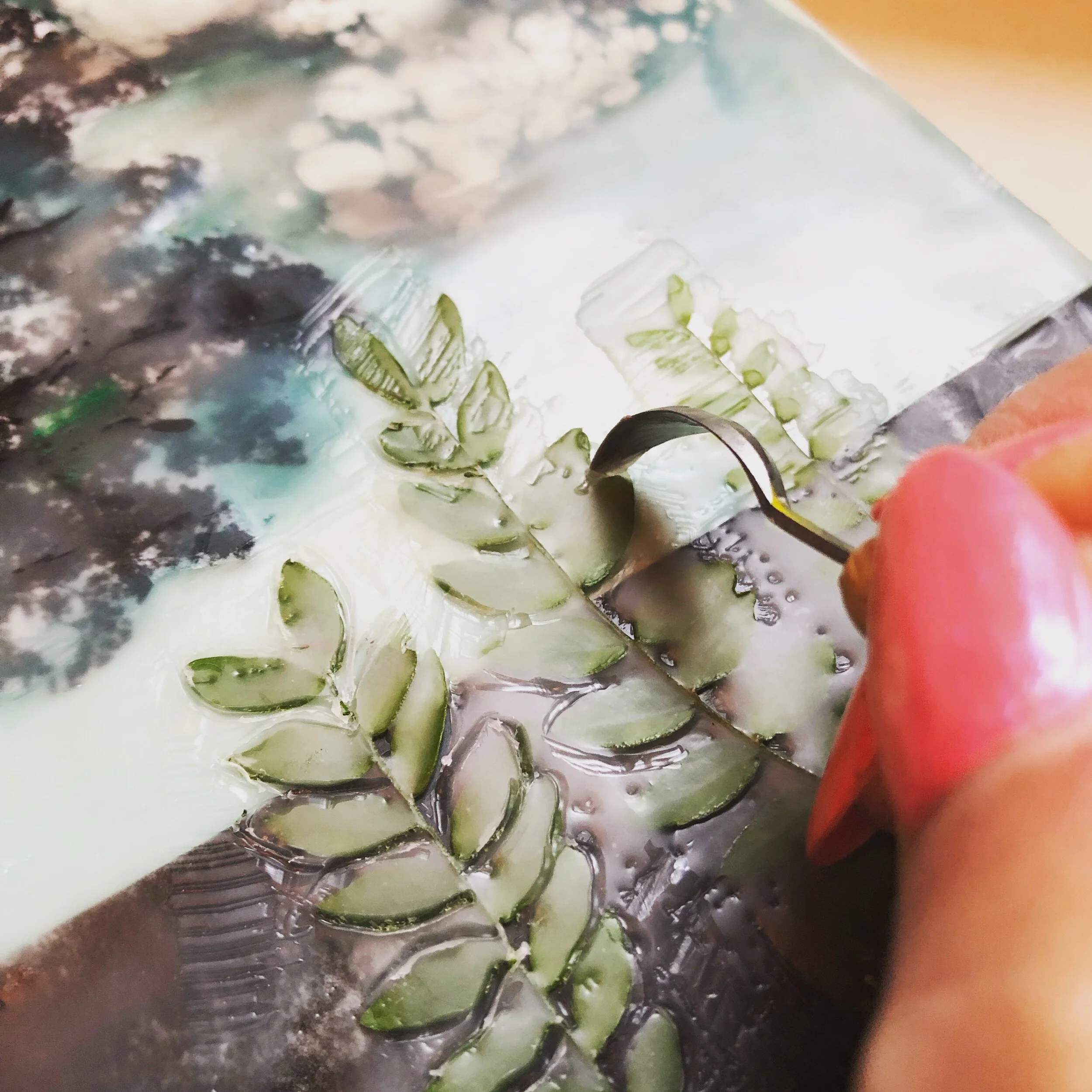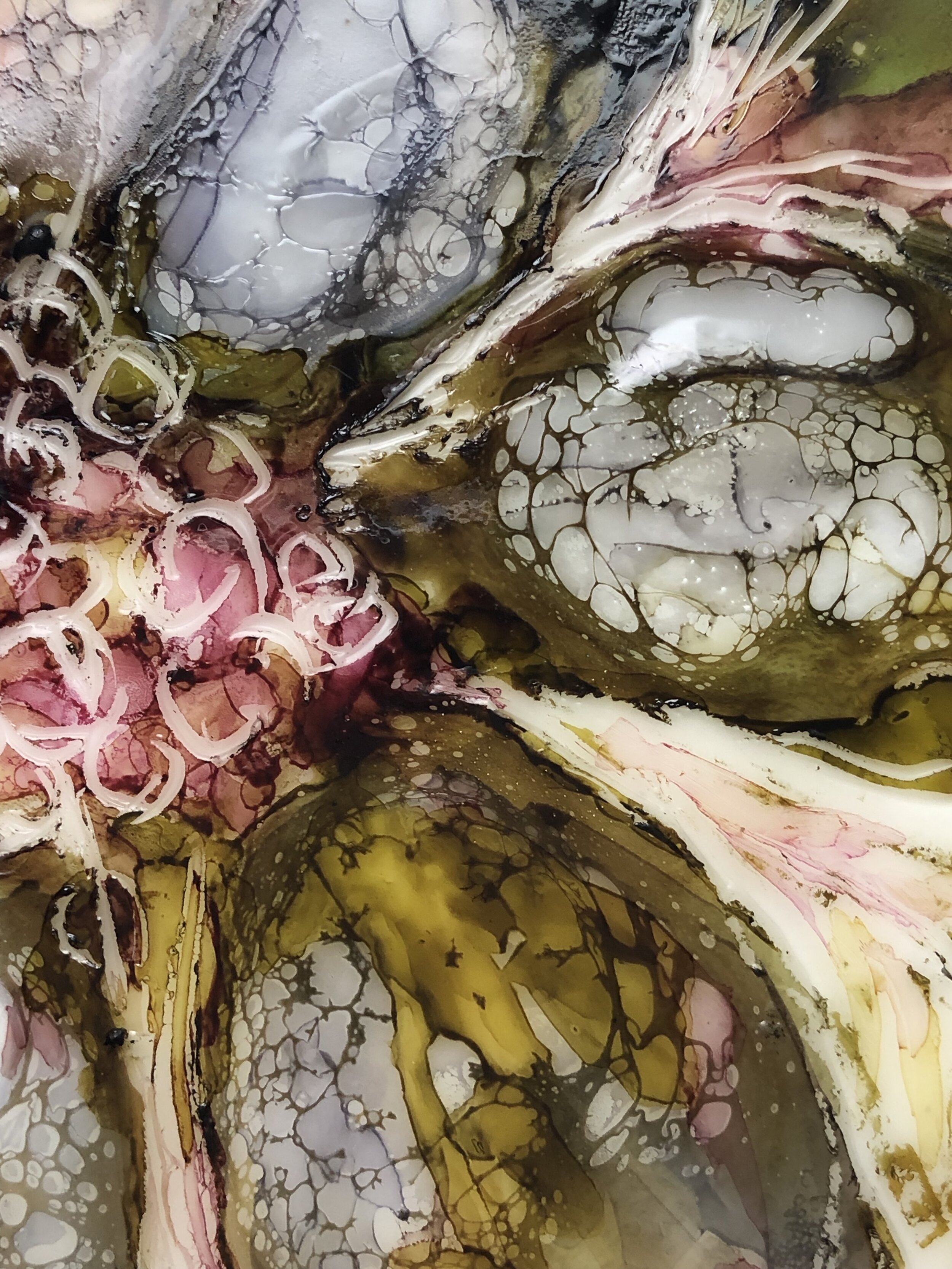My Encaustic Process
I love the power of my miter saw!
Cutting and prepping the wood
Encaustic wax is best on a solid porous substrate such as wood. I sometimes cut and sand my own wood so I have control over the dimensions. I also purchase raw cradle boards from art stores.
I prep the wood differently depending on the project. Usually I prime the surface with encaustic gesso. I may leave it white or can add a base color with PanPastels, alcohol inks, and CeraColor paint. I sometimes mount a watercolor painting on the wood and build upon it with encaustic wax.
Fusing the wax with my torch
Building a base of encaustic medium
Encaustic medium is a blend of beeswax with damar resin (a tree sap that acts as a hardener). Before I can start painting the wood must have a substantial base of clear encaustic medium. I brush on several layers, fusing between each layer with a torch. This process was perhaps the most challenging technique to master. There is a fine balance between the heat source and the wax. The heat needs to be “just right” to prevent bubbles, percolations, and hot spots. Although I aim for a smooth surface, I often embrace the little imperfections of each fusing and incorporate them in my work.
Carving into the fused leaf
Ready to create!
There are many ways I add color on my encaustic paintings. I either use store-bought colored wax or custom mix my own wax colors with powdered pigments. Other materials that I use are oils sticks, alcohol inks, PanPastels, water-soluble crayons, India ink, shellac and gold foil. I am also known to collage paper, metal, and items from nature (such as leaves). Each layer of color/material is fused with the “just right” flame.
The best part about encaustic is the ability to carve into the wax. For me it’s a perfect blend of 2-D painting, clay, and sculpture. This medium truly resonates with my creative soul.
Caring for your Encaustic Art
Once the encaustic wax cures (1-3 years) it is hard and archival. Although the melting point is 165-200 degrees Fahrenheit, the painting should be displayed away from direct sunlight to prevent softening. Likewise, extremely cold temperatures should be avoided to prevent the wax from becoming brittle. Encaustic art should not be framed under glass since hot air can get trapped and create a greenhouse effect.
With time a soft hazy cloud might form on the encaustic painting. If this occurs, no need to worry. The surface can be buffed with a soft cloth and restored to its original shine.



